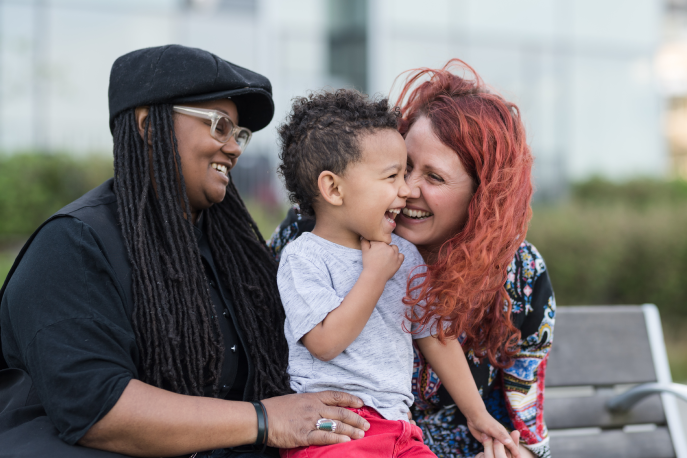Father’s Day is coming up on Sunday, and the holiday’s a good reminder to reflect on the diverse ways that people build families, especially during Pride Month, as we celebrate the LGBTQ+ community.
Notably, a 2019 survey found that 63 percent of LGBTQ+ millennials between the ages of 18 and 35 are considering becoming parents for the first time or having additional children. As a growing percentage of LGBTQ+ people become parents, family models will continue to become increasingly diverse.
This growing diversity – beyond the long-positioned cultural norm of a biological mother and father – is an opportunity for schools, organizations, and workplaces to be more inclusive toward and respectful of the many types of families that exist. Some families have two fathers or two mothers, and some take an even broader sense of family – many adopted children have biological families with an active role in their lives, and in some cases donors or surrogates maintain a presence in the family’s life.
Transgender parents, meanwhile, have broadened the range of definitions for a mother and a father – some who once identified as mothers ultimately identify as fathers, or vice versa, and some maintain their original parental identities even after transitioning genders. Still others, particularly transgender men or non-binary parents, might be most comfortable being referred to as a “birthing person” if bearing a child.
Being more inclusive of LGBTQ+ families will also benefit family structures that include single parents, foster parents, and non-parent caregivers. For too long, a lack of representation has obscured this diversity and impeded efforts to support the well-being of all families.
It’s easy to say that all of these family models are valid and worthy of respect, but how can we actively build a more inclusive culture through our day-to-day actions?
Here are a few ways to get started:
1. Normalize more inclusive language. Asking someone about their mother or father suggests that you have an existing expectation for what that person’s family should look like and inadvertently makes it their responsibility to clarify. Instead, try asking this more inclusive question: “What were the people who raised you like?”
2. Build traditions that work for everyone. Making Father’s Day or Mother’s Day cards at school is a fun way to help kids express their creativity, but can leave children in LGBTQ+ families feeling left out or marginalized. Take the step of broadening the assignment so that everyone feels included by focusing the day on making a card for a cherished adult in a child’s life.
3. Avoid intrusive questions. If you wouldn’t ask the question of a heterosexual, cisgender parent or their children, don’t ask that question of people in LGBTQ+ families. For example, questions about reproduction or surrogacy are intensely personal and it should be up to the families to share if they want to.
For more information on how to support LGBTQ+ families, you can find more resources at the Family Equality Council and COLAGE.
RALIANCE provides consulting, assessment, and employee development services to help build more equitable workplace cultures and create environments free from sexual harassment, misconduct and abuse. We stand ready to support your organization’s goals – contact us today at info@raliance.org to get started.

